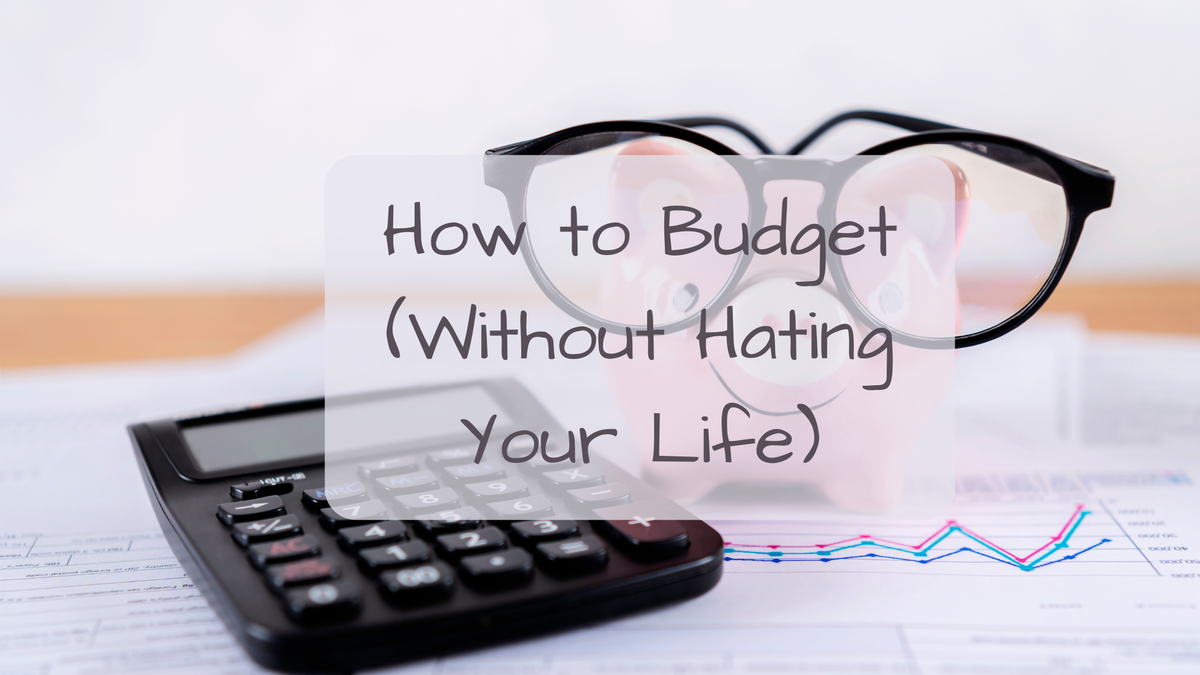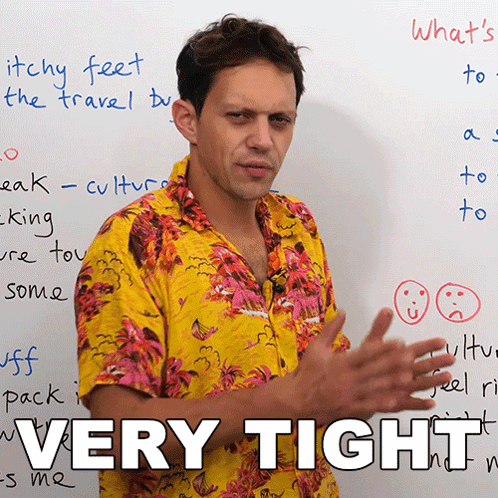How to Budget (Without Hating Your Life)
Think budgeting means giving up everything fun? Think again. Learn how to create a budget that works for real life—no guilt, no overwhelm. Just simple steps, smart tools, and a plan that gives you freedom, not restriction. Your money deserves direction.

If just reading the word “budget” makes your chest tighten a little… you're not alone.
Budgeting gets treated like a punishment—like it's all about cutting out everything fun, feeling guilty about your coffee, and getting lectured by some guy in a suit who’s never lived paycheck to paycheck a day in his life.
Let me be clear: that is not budgeting.
A real budget isn’t a punishment—it’s a power move. It tells your money what to do before it disappears. And it’s not about restriction. It’s about direction.
And if you’ve been winging it? Don’t worry. That ends today—with a budget that actually works for your real life.
Why Budgeting Feels So Overwhelming (But Doesn’t Have to Be)
Most people associate budgeting with scarcity—like it’s the financial version of going on a crash diet. But budgeting isn’t about giving everything up. It’s about knowing what you actually want to say yes to.
Here’s the truth: most of us were never taught how to budget. Not at home, not in school, and definitely not in a way that reflects today’s economy.
So if you’ve ever started a budget and then abandoned it three days later because life happened—welcome. You’re in good company.

Step 1: Let Go of the Shame
You are not “bad” with money because you don’t have a budget.
You just haven’t had the right tools—or the time, energy, or mental bandwidth to make one that fits your actual life.
So we’re not starting with guilt. We’re starting with grace.
Budgeting is not about perfection. It’s about progress.
Step 2: Know What’s Coming In—and Where It’s Going Out
This sounds obvious, but most people don’t have a real grip on their numbers. They’re guesstimating. That’s how $20 gas station stops turn into “where did my money go?!”
Start here:
- Monthly income (after taxes)
- Fixed expenses (rent, car, phone, insurance)
- Variable expenses (groceries, gas, extras)
- Debt payments
- Savings contributions (if any)
💡 Want a shortcut?
My FREE Financial Planner Bundle (a $47.00 value!) includes a printable budget planner, savings tracker, bill tracker, and more. It makes budgeting feel doable, even if spreadsheets make you twitch.
What Budgeting Looks Like in Real Life
Budgeting isn’t about neat little categories that always behave.
It’s about preparing for:
- Irregular income
- Random kid expenses
- Forgotten subscriptions
- Medical co-pays
- That one weekend when everyone has a birthday
Budgeting is less about perfection and more about predicting what’s possible.
Even writing down rough ranges (like $400/month for groceries or $100 for gas) puts you in a stronger position than guessing.

Step 3: Use the 70-20-10 Rule (or Adjust It for Your Life)
Here’s a beginner-friendly formula that won’t leave you crying into your calculator:
- 70% of your income → Needs (housing, groceries, bills, etc.)
- 20% → Debt payoff or savings (whichever needs focus)
- 10% → Flex fund (emergencies, buffer, or joy money)
Is that exact breakdown realistic for you? Maybe not.
If you’re living paycheck to paycheck, you might be closer to 90-5-5 or 80-15-5. That’s fine. The point is to have some framework to guide your decisions—not to stress over math.
Step 4: Give Every Dollar a Job
If money is just sitting in your account with no name on it, it will disappear—probably on DoorDash and impulse Target runs.
So before you spend, assign every dollar a role—even if it’s $20. Whether it’s “gas,” “groceries,” “savings,” or “self-care,” that dollar should know where it’s going.
This is the foundation of Money Rule #6: Create a realistic budget.
Step 5: Automate What You Can
Set up small systems so your money takes care of itself:
- Auto-pay minimums for bills (to avoid late fees)
- Auto-transfer to savings—even $5/week adds up
- Use free tools like Mint, YNAB, or Goodbudget
Not a tech person? That’s okay. Even using pen and paper with consistent check-ins gives you clarity.
Low energy? Low motivation? Let automation do the heavy lifting.
Bonus Tip: Include a “Sanity Line Item”
This is where most budgets fail: they forget you’re a human being.
So bake something fun into your budget. Even $10/month for a face mask, book, app, or treat is worth it.
Why? Because burnout makes people blow up their budget entirely. But a little joy keeps you going.
Budgeting isn’t just about surviving—it’s about building a life that feels sustainable.
Mini Case Study: Meet “Tina”
Tina is a single woman earning $2,800/month after taxes. She used to wing it, hoping the bills would get paid before her debit card got declined.
She finally built a simple budget using this format:
- Rent + bills: $1,800
- Groceries + gas: $400
- Minimum debt payments: $300
- Savings: $50
- Sanity money: $50
- Leftover wiggle room: $200
She checks in every Sunday and uses my FREE Financial Planner Bundle to keep track. And while she’s not rolling in extra cash, she’s not panicking every time she opens her bank app.
That’s what budgeting gives you: peace of mind, not perfection.
Budgeting Hacks That Actually Help
Want to make your budget stretch further? Try these:
- Cash envelopes – Great for groceries, gas, or dining out
- Sinking funds – Mini-savings accounts for specific goals like holidays or car repairs
- “No spend” weeks – Pick one week a month to spend nothing outside essentials
- Round-up apps – Automate small savings without thinking
The key is to choose what works for you—and ditch the rest.
Want to Understand Why Financial Literacy Changes Everything?
Budgeting is just one part of the picture—but without financial literacy, the whole system feels stacked against you.
This free ebook shows you the real cost of being financially uneducated—and why learning the basics can change everything from how you save to how you plan your future.
👉 How Money Works – Free Ebook Overview
And if you’re ready for real-time help, book a no-pressure call with me and my gal Joy. We’ll walk through what’s working, what’s not, and what next steps actually make sense for you.
👉 Book Your Free Intro Strategy Call
From Someone Building Alongside You
I don’t love budgeting because it’s “fun.” I love it because it gives me freedom.
Freedom from panic. Freedom from overdraft fees. Freedom to say yes to things that matter—without guilt.
You don’t need to be perfect with money to get better with it.
You just need a system that makes sense for your life—and a little support to stick with it.
👉 Download the 7 Money Rules Free Guide
👉 Grab the FREE Financial Planner Bundle
👉 Read the Free “How Money Works” Ebook
👉 Book Your Free Intro Strategy Call
We got this.
Affiliate Disclaimer
This blog may contain affiliate links, which means I may earn a small commission if you click on a link and make a purchase—at no extra cost to you. As an affiliate, I only recommend products that I personally use, trust, and believe will add value to my readers. Your support helps keep this content free and allows me to continue sharing helpful tips and resources.
I am not a medical professional, and the information provided on this blog is for educational and informational purposes only. Always consult with a qualified healthcare provider before making any changes to your skincare or wellness routine.